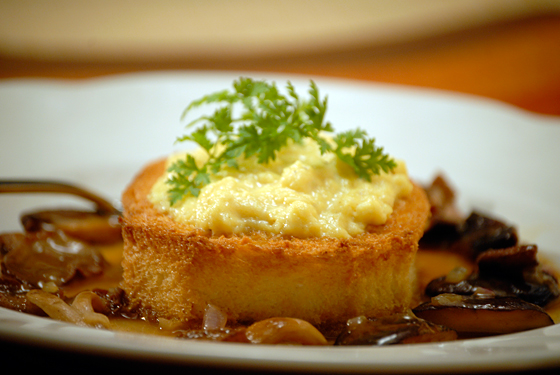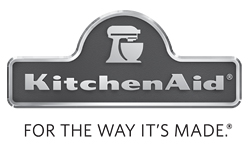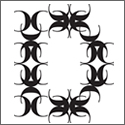Scrambled Eggs in Bread Cases with Candied Oyster Mushrooms
Episode 118: Egg-ceptional
Recipe: Scrambled Eggs in Bread Cases with Candied Oyster (Caramelized) Mushrooms
Whisking scrambled eggs almost continuously as they begin to set allows only the smallest possible curds to form, producing the creamiest mixture. To prevent the eggs from overcooking once they have reached the proper consistency, a portion of reserved uncooked eggs is stirred in with cream at the end.
Crisp bread cases make an ideal receptacle, but they should be filled only at the last moment so they don’t get soggy. The mushrooms that are served alongside are cooked in the skillet until they are dry and brown, concentrating their taste. Demi-glace, shallots, and white wine are added, and the sauce becomes rich and meaty, balancing the mild eggs. Good-quality demi-glace, or reduced brown stock, is available in specialty stores and high-end supermarkets.
Scrambled eggs prepared this way can be kept warm after cooking in a double boiler over 150-degree water for at least 30 minutes.
The sautéed mushrooms can be used as a garnish for most meats and roasts.
Serves 6
BREAD CASES
6 1-inch-thick slices white bread, from a 1- to 2-day-old loaf (not dry or soft)
2 tablespoons unsalted butter, softened
MUSHROOMS
4 ounces oyster or shiitake mushrooms (about 18–20 total)
2 tablespoons unsalted butter
1/4 teaspoon salt
1 tablespoon chopped shallots
2 tablespoons dry white wine
1/2 cup Brown Sauce (see recipe below)
EGGS
12 large eggs, preferably organic
1/2 teaspoon salt
1/4 teaspoon freshly ground black pepper
2 tablespoons unsalted butter
3 tablespoons heavy cream
Preheat the oven to 400 degrees.
FOR THE BREAD CASES: Cut the bread into 6 slices, each a good 1 inch thick. Trim off the crusts to form a square. Then, 3/8 inch in from the edge, cut a square in each slice, cutting at least ½ inch into the bread, to create a border. Remove the bread in the center by cutting slices of it out on the bias, then cutting scraping out the inside to create a receptacle with walls approximately ¼ to 3/8 inch thick and a bottom of the same thickness (save the trimmings for bread crumbs). Butter the bread cases inside and out with the soft butter (using about 1 teaspoon of butter for each one). Arrange the cases on a cookie sheet and bake for about 7 minutes, until nicely browned all over. Set aside.
FOR THE MUSHROOMS: Remove the stems if using shiitake mushrooms, (although tough and fibrous, they can be used for stock). Wash the mushrooms if they are dirty.
Melt the butter in a large skillet. When it is hot, add the mushrooms and cook them over medium-high heat until most of the moisture comes out of them and evaporates. As this occurs, the mushrooms will start sizzling in the butter. Continue cooking for a few minutes longer (a total of 7 to 8 minutes), until the mushrooms are brown and look almost candied. Add the salt and shallots and sauté for about 1 minute, then add the wine. Toss and keep cooking until most of the wine has evaporated and the mushrooms are just barely moist with the wine. Add the brown sauce, bring to a boil, and simmer for 1 to 2 minutes, until it reduces and coats the mushrooms. Set aside.
FOR THE EGGS: Break the eggs into a bowl, add the salt and pepper, and beat with a whisk to mix well. Set 1/3 cup of the raw eggs aside.
Melt the butter in a large heavy saucepan. When it is foaming, pour in the eggs and cook over medium to low heat, stirring gently with the whisk; be sure to get around the bottom edges of the pan with your whisk, since the eggs have a tendency to set and harden there first. Keep cooking and whisking gently until the mixture gets very creamy; the eggs should have the smallest-possible curds. Continue cooking just until you can see the bottom of the pan as the whisk is drawn through the eggs.
Remove the pan from the heat (the eggs will continue cooking, especially around the edges of the pan). Add the reserved raw eggs and the cream and keep whisking; the uncooked eggs and cream will absorb the heat still generated by the pan.
Place a bread case in the center of each serving plate. Arrange 4 or 5 coated mushrooms around it, and fill the cases with the scrambled eggs. Serve immediately.
BASIC BROWN SAUCE
Makes about 2 quarts
A basic and essential ingredient for the cook, brown sauce is added to other sauces or used to create a sauce for meat or poultry. Mine is slightly thickened with flour, which loses its raw taste through the long cooking process. The sauce can be made with all chicken bones or with turkey bones.
4 pounds veal or beef bones (shins, necks, tails, etc.), cut into 3-inch pieces (you can have the butcher do this)
1 pound chicken bones (necks, wings, backs, etc.)
2 cups diced onions
1 cup diced carrots
1 cup diced celery
6 garlic cloves, crushed but not peeled
1/3 cup all-purpose flour, dissolved in 1½ cups water
1/4 cup tomato paste
8 quarts cold water
1 cup dry white wine
2 tablespoons dark soy sauce
1 teaspoon black peppercorns
3 bay leaves
1 teaspoon crushed dried thyme
Put the bones in a large stockpot and cook over high heat, stirring occasionally, for 15 minutes. Reduce the heat to medium and cook for another 15 minutes, until they are browned and have rendered some fat. (There should be enough fat on the bones and in the skin to brown the bones.)
Add the onions, carrots, celery, and garlic and cook for another 15 minutes or so, stirring, until the bones and vegetables are lightly browned.
Drain the bones and vegetables in a colander to eliminate the fat and return them to the pot.
Add the flour mixture, tomato paste, water, wine, soy sauce, peppercorns, bay leaves, and thyme to the pot and bring to a boil, then reduce the heat and simmer slowly, uncovered, for about 3 hours, until reduced to about 8 cups. Skim off and discard the foam that comes to the top after 30 minutes. Strain the sauce through a fine strainer.
The sauce can be kept covered in the refrigerator for up to 1 week, or it can be divided among small plastic containers and frozen.
ALTERNATE METHOD: Heat the oven to 400 degrees. Arrange the bones in one layer in a large roasting pan or on a baking sheet and roast for 1 hour, stirring the bones to brown on all sides. Sprinkle the onions, carrots, celery, and garlic on top and roast for another 30 minutes.
Drain the bones and vegetables in a colander and discard the fat. Add the bones to a stockpot. Deglaze the roasting pan or cookie sheet with 2 to 3 cups water and heat to melt the solidified glaze. Add to the stockpot.
Continue with the recipe, adding the flour, tomato paste, the water, and the other ingredients.
Copyright © 2011 by Jacques Pépin. Used by permission of Houghton Mifflin Harcourt. All rights reserved.











